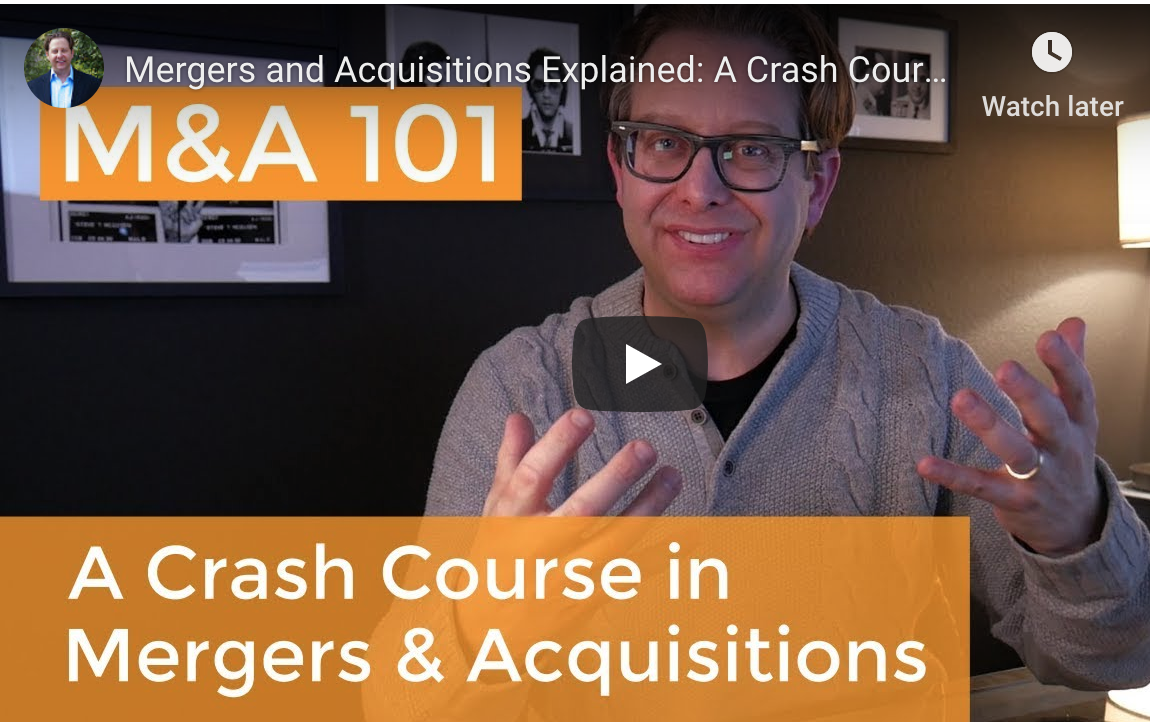The Insider’s Guide to Marketing and Selling Your Business
Marketing a Business for M&A
After you have finished the pre-sale process and laid the proper foundation for selling your main street or lower middle market business, it’s time to begin looking for buyers. The key to any successful M&A deal is having two willing partners. You’ve got the seller side covered, but now the trick is finding a willing buyer.
In some cases, a buyer will have approached you, so the steps in this section can be trimmed back. In most other cases, though, you’ll need to do some of the heavy lifting to identify prospective buyers and market your company to them. While it may seem odd to be marketing a business and not a product, think of selling your company as selling any other product. Sure, this is a way larger transaction with hundreds of more steps, but you know how to sell.
Generate a Target Buyer List and Analyze for Synergies
Working with your advisors, create a profile for your ideal buyer as well as a list of prospective buyers who match that profile. Look for synergies between your two companies. Would the outcome be beneficial for both sides? It can be hard to know, especially if the prospective buyer is a private company, but try to do homework on the target buyer.
Once you have the market defined, create a list of prospects. This list should be large enough to give you the opportunity to delve in and repeat the process. If your target market is too small, your odds of success decrease.
Determine the type of companies that would be interested in buying your company, and then filter the list to remove companies not doing well financially or that have never acquired another company. Additionally, beware of experienced acquirers in unrelated industries or different geographic locations, they may be overly confident in believing the acquisition will run as smoothly as previous acquisitions. The acquirer should have experience within your industry and geographic region to produce the outcome you’d expect from a veteran.
Part of the process also requires that the target company prequalify buyers. They must have the financial capability to close the deal. To narrow the field, the buyer should have the following criteria: a history of stable financial and growth performance; market leadership; a recognized brand name; a strong management team; stable and economically favorable relationships with customers, vendors, creditors and debtors; room for growth, certain licenses or permits that are otherwise tough to acquire; a certain range of revenue and EBITDA; and a certain geographical location.
Obviously, no target will have ALL of these criteria or, if one does, it will have a lot of suitors. It would be advisable to develop a plan for M&A that identifies targeted industries, lists the evaluation criteria, explains how the acquisitions will contribute to acquiring company growth, and lays out the integration plan and sets performance goals. You need a realistic timetable, which outlines the deal milestones and expected completion dates. Your company should identify its objectives.
Approach Prospective Buyers at C-suite Level to Determine Interest
Deals are made at the C-suite level. Whether they work for competitors, vendors, or in another industry, members of the C-suite are the individuals you need to be speaking with about the deal to gauge interest. It may require having your management team make presentations to the C-suite members of a prospective buyer. It may require individual phone calls to prospective buyer CEOs. Regardless, the deal is going to be established at the highest levels of both companies.
You have to determine which method you are going to use to approach prospects for M&A. This decision will likely depend on the size of the business you are selling and whether you are conducting an auction or a negotiated sale.
Small businesses will typically reach buyers by marketing the business online. Business brokers generate the majority of their buyer interest through online listings. Business brokers or investment bankers (for higher-priced transactions) will also reach out directly to companies that might be interested.
For auctions, starting with a very complete list and reaching out to all the prospects simultaneously is important. This is certainly a good approach from a timing standpoint in a negotiated sale, although it is not critical as you can add a buyer to the process at any point. Every buyer represents an individual negotiation, with his/her own timeline in the negotiated sale context. In an auction, however, if a possible buyer misses the first round, they are not likely to get into the process at all.
After creating the list, reach out to your networks to see if you’re connected in any way to the person or organization you’re planning to contact. This includes direct outreach by e-mailing or calling your extended contacts and setting up meetings. Remember that you are looking to have an introductory conversation—not complete the entire sales process in one afternoon. Representatives from your company will want the opportunity to meet with many potential partners for M&A.
Sign Confidentiality Agreements with Particularly Interested Prospects and Distribute Confidential Information
Before sharing confidentiality information, you have to sign confidentiality agreements with the prospects. Not every bit of shared information needs to be covered by the confidentiality agreement. Review the draft with your legal team. They will negotiate the confidentiality agreement with the buyer(s). Then, you’ll sign the final document before sharing the confidential information.
Evaluate Plan Performance and Recalibrate if Necessary
If your plan is not working correctly, you would want to know, right? The same holds true for your sales process. Establish metrics and timetables. If things are not going the way you want, review the plan performance. Discuss adjustments you can make to improve success. The goal is not to be in a continuous sales process. You have done all this work to sell your business, so adjust the plan if it isn’t working.
This is one of the most critical aspects of a successful sales strategy. As you move forward in the process of soliciting potential partners for M&A, you must keep track of your progress and be prepared to modify the process to suit the needs and interests of different potential partners for M&A. Regularly schedule meetings for the purpose of reviewing the process and address these questions:
- How is the process going?
- What is working and what worked previously?
- What is not working and what failed previously?
- What could have been done differently to improve the process?
- If the process is an auction, do you have enough interest to pull off a successful auction?
Reviewing the process gives you the opportunity to make adjustments for a successful outcome. You have to be willing to change or eliminate what doesn’t work and to streamline the process and improve what does. Always keep in mind: What is the goal of the process? Are we continuing to make progress toward that goal?
If you want to speak to an M&A adviser, reach out to me at (512) 910-2700. I have offices in Austin and Houston, although I help buyers and sellers all over Texas. I look forward to connecting with you!

